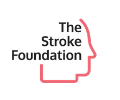There are three main types of stroke; each one of them results in different treatment and recovery therapies.
Ischemic stroke
An ischemic stroke occurs when a blockage, usually a blood clot, in an artery prevents blood flow to the brain. The lack of oxygenated blood flow will make brain cells stop working, which is why acting F.A.S.T is extremely important. A blockage that last a few minutes can mean long-lasting disabilities.
There are two main types of ischemic stroke:
- Embolic: a blood clot forms outside of the brain and travels through an artery to the brain.
- Thrombotic: a blood clot forms in an artery within the brain.
Ischemic stroke represents over 80% of all strokes.
TIA - Transient ischemic attack
A transient ischemic attack, also known as a “mini-stroke”, occurs when a blockage prevents blood flow to the brain for a very short time (minutes).
It is important to understand that a TIA is a warning sign — getting the appropriate care at the time and making lifestyle changes can be life-saving. The symptoms of a TIA can be similar to a stroke, which is why it’s very important to call 911 and get immediate help.
Hemorrhagic stroke
When an artery in the brain ruptures or leaks bloods it can cause a hemorrhagic stroke. The sudden rush of blood will put pressure on brain cells which causes them to be damaged and stop working.
High blood pressure is a major risk factor for hemorrhagic stroke. This type of stroke can happen in two ways:
- Intracerebral: the hemorrhage affects the surrounding brain tissue.
- Subarachnoid: the hemorrhage affects the area between the skull and the brain (much less common type of stroke).





